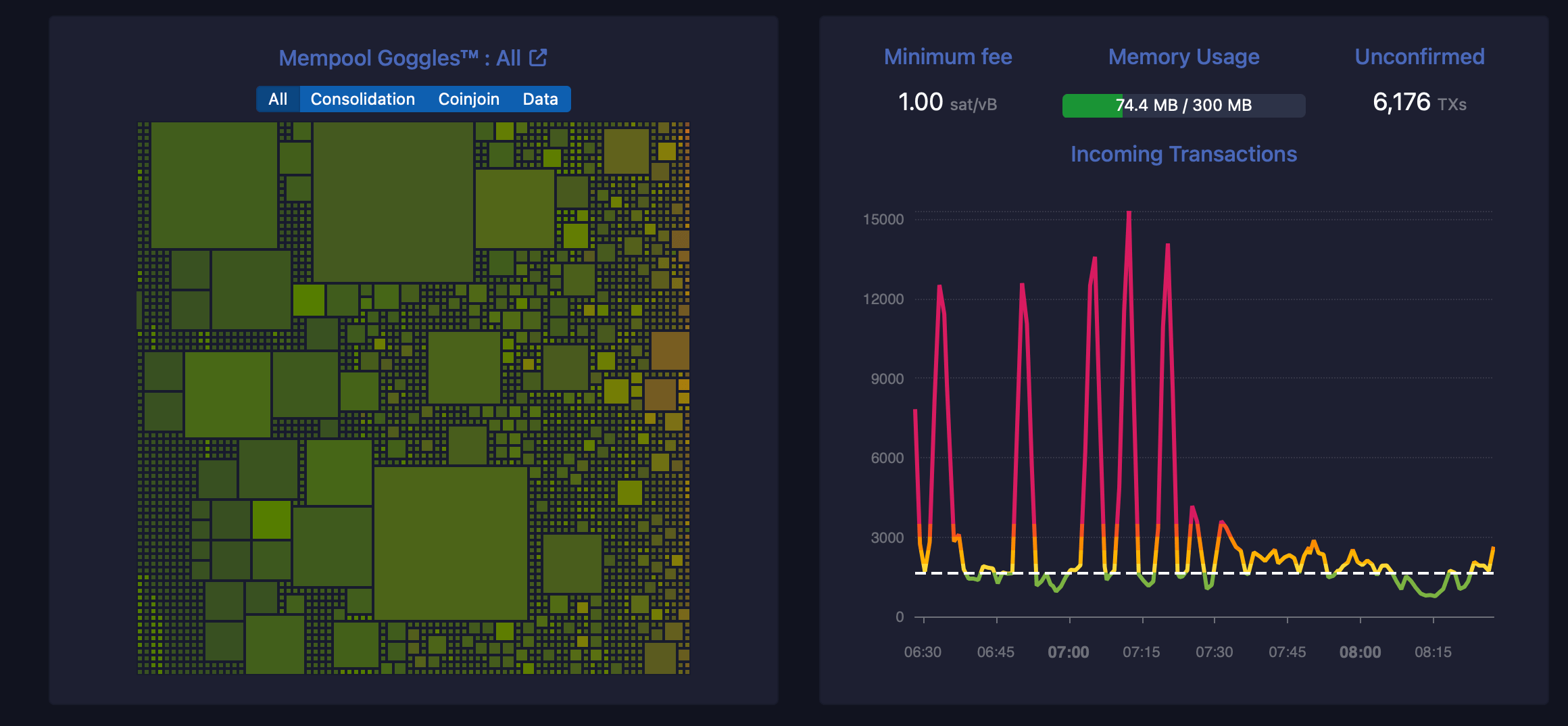
Bitcoin miners are confronting a perfect storm of falling revenue and dwindling network activity, raising concerns about the blockchain’s long-term security.
Bitcoin’s Transaction Drought
Daily bitcoin (BTC) transactions have dropped to their lowest levels since late 2023, leaving the mempool—the queue of unconfirmed transactions—unusually empty. This decline has slashed transaction fees, which now barely contribute to miner revenue. Combined with April’s fourth halving, which cut the block subsidy to 3.125 BTC, miners have faced unsustainable revenue pressures.

The subsidy reduction alone slashed miners’ per-block earnings by 50%, forcing greater reliance on fees, which never materialized. While onchain activity has plummeted, the network is witnessing large-scale BTC consolidations. Entities like centralized crypto exchanges, are moving BTC in bulk transactions rather than frequent smaller ones. For example, a single consolidation might transfer 10,000 BTC but generate only one transaction fee—far less than thousands of individual transfers.

This is nothing new—centralized exchanges have always leveraged bulk transactions—but when minimal activity is factored in, the situation deteriorates further. Meanwhile, custodial services, governments, corporations (notably firms like Microstrategy), and exchange-traded funds (ETFs) further depress transactional demand. Over 1 million BTC ($111.78 billion) is held by U.S. spot ETFs alone, with most assets stored in custodial wallets. These products require minimal blockchain interaction, shrinking the fee pool miners depend on.
Regardless of the ongoing debates over block size and the fee market, the undeniable truth remains: fewer transactions can jeopardize Bitcoin’s security model. Miners secure the network by validating transactions, funded by subsidies and fees. If revenue falls below operational costs—particularly energy expenses—miners may shut down equipment, reducing the network’s hash rate. A sustained drop could make the chain more vulnerable to attacks, as fewer miners compete to validate blocks.
Long-term solutions hinge on adoption. Increased transactional demand—driven by retail usage, Ordinals, Runes, or real-world asset (RWA) or decentralized finance (defi) tokenization—could revive fees. Without growth, miners risk being trapped between falling income and rising costs, jeopardizing the decentralized backbone of bitcoin’s $1.88 trillion ecosystem.
